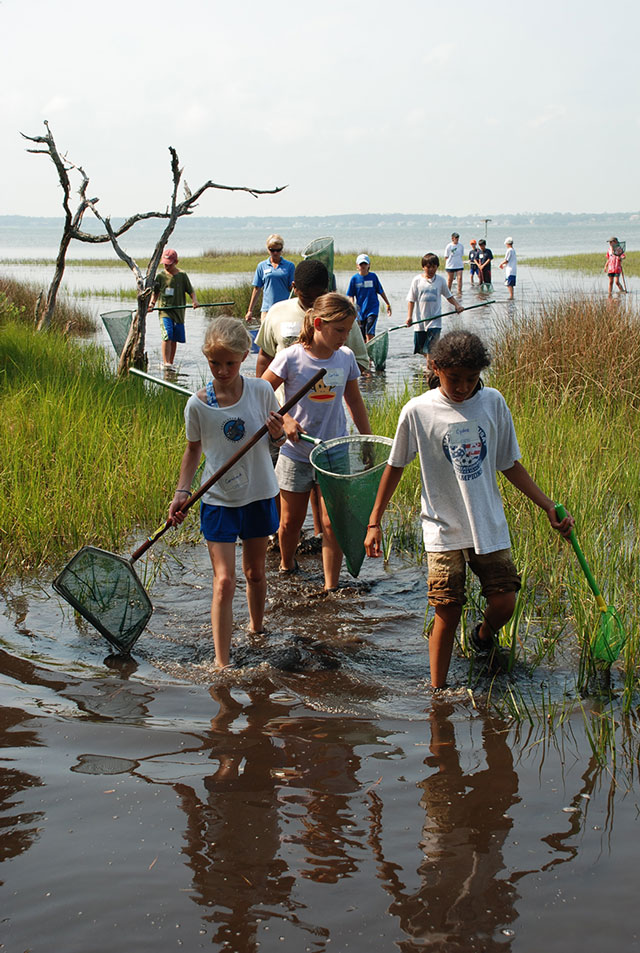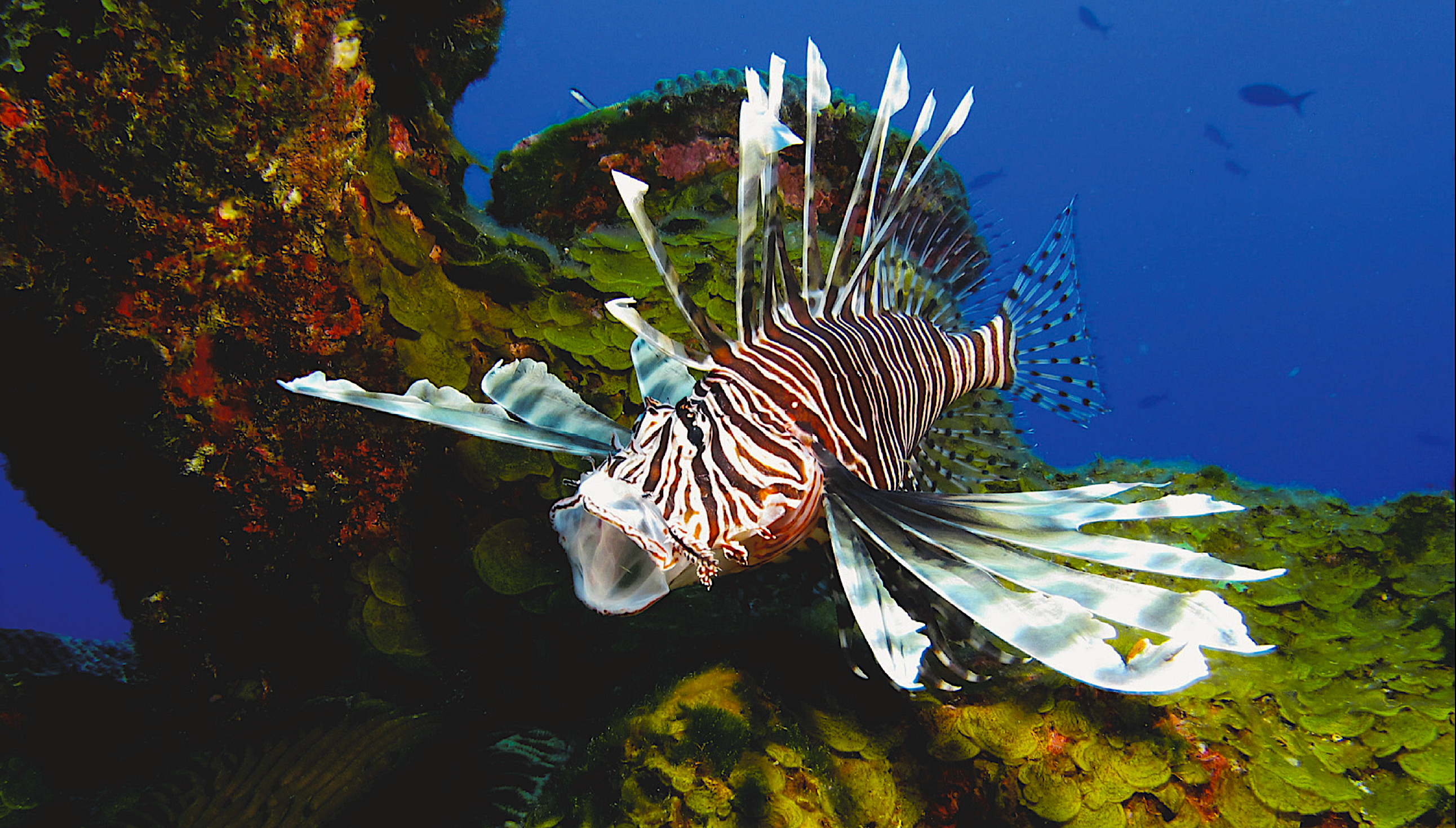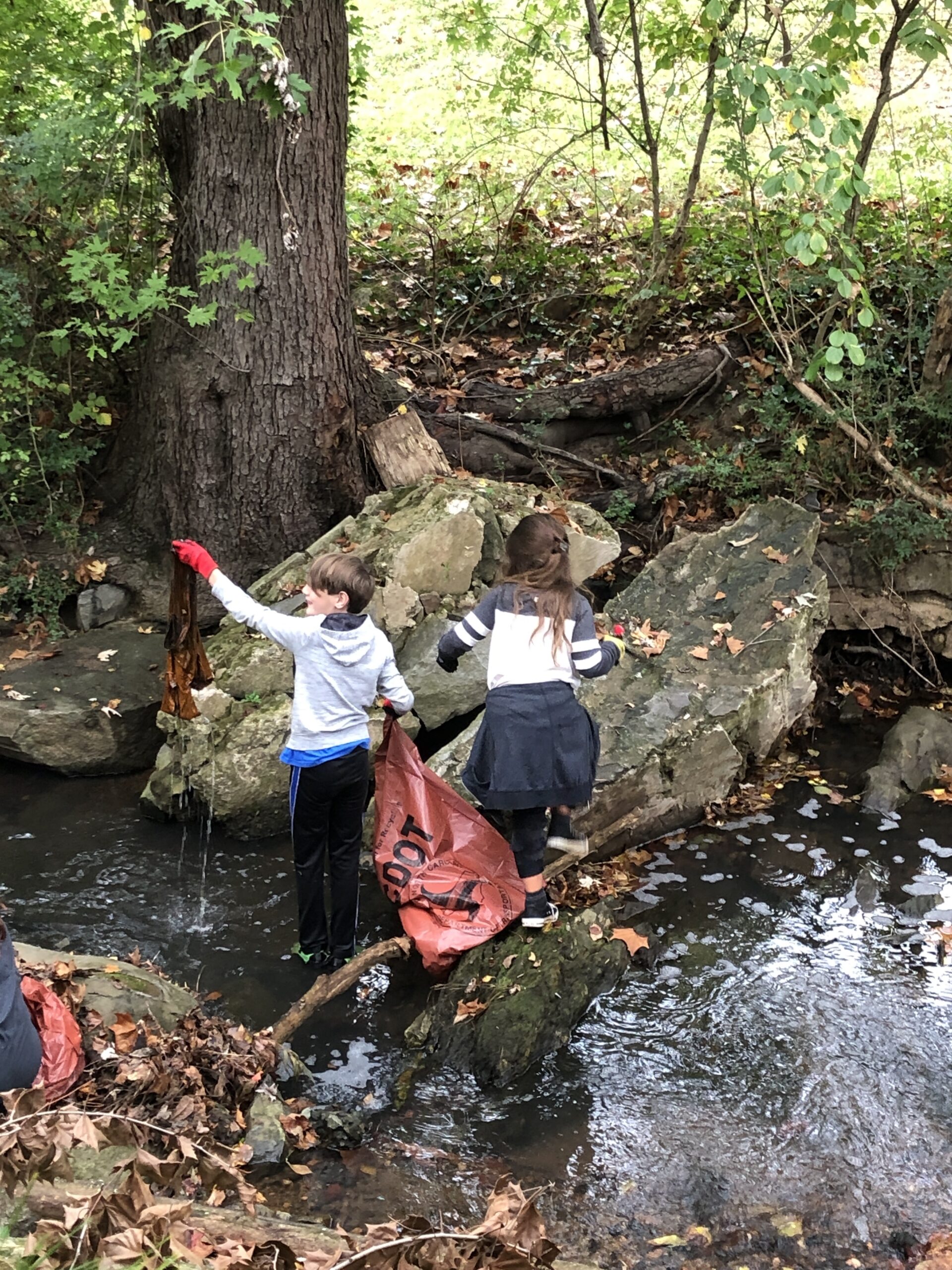Barrier Island Buffers: Bald Head Forest Anchors the Island

When a storm hits Bald Head Woods, the maritime forest acts as a buffer.
The canopy has the same aerodynamics as an airplane, explains Hope Sutton, stewardship coordinator and southern sites manager for the N.C. Coastal Reserve and National Estuarine Research Reserve.
“The wind goes up and over the top of the canopy,” Sutton says. “The interior and vegetation are protected by the forest.”
Because of the state coastal Reserve, much of the maritime forest on Bald Head Island has remained intact. And the forest — known for its stately trees — is an anchor for the island.
“The maritime forest builds elevation,” says Suzanne Dorsey, executive director of Bald Head Island Conservancy and Smith Island Land Trust. “Tree roots hold sand in, while the canopy filters sand blown from beach dunes. A barrier island needs to continually build elevation in order to withstand the harsh storms that batter our coasts.”
Spread over more than 170 acres in the middle of Bald Head Island, the Reserve is managed by the N.C. Division of Coastal Management (DCM), in partnership with the Bald Head Island Conservancy. It also is part of the Smith Island barrier island complex that lies east of the Cape Fear River and is bounded on the south and east by the Atlantic Ocean.
The state’s Reserve system has seven sites with maritime forests, including Bald Head Woods.
Maritime forests grow behind dunes and are an important part of a barrier island’s ecosystem. The main species include live oak and laurel oak, which have waxy leaves to withstand salt spray. The forest also provides a shelter and nesting area for birds, squirrels and tree frogs that could not survive in other areas of the harsh barrier island environment.
“When the forest canopy is disturbed by development, the salt spray gets underneath and kills the trees and other susceptible vegetation,” says Mike Lopazanski, DCM coastal and ocean policy manager.
PRESERVING FORESTS
In 1989, the N.C. General Assembly set up the state’s coastal Reserve system to protect unique habitats, says Rebecca Ellin, N.C. Coastal Reserve and National Estuarine Research Reserve manager. “We are lucky in North Carolina to have a variety of maritime forests that are protected for research and education — and places where visitors can come,” Ellin adds.
The Reserve program includes the N.C. National Estuarine Reserve system managed by DCM, in partnership with the National Oceanic and Atmospheric Administration.
The most recent survey in 1988 showed that the state had about 5,000 acres of maritime forest. “The state recognized that the maritime forests were real gems that need to be protected,” Lopazanski says. Before the Reserve system was established, little had been done to shield maritime forests from development other than a landowner’s preference for dense cover or for an on-site wetland eligible for protection.
After a golf course was proposed for Buxton Woods on Hatteras Island in 1986, the N.C. Coastal Resources Commission developed a management strategy to protect the state’s largest maritime forest. The 1988 survey also identified 24 forested areas spread over more than 12,000 acres on 16 islands. The inventory also showed that by 2000. all privately owned maritime forests in North Carolina would be cleared, pruned or developed.
The state began an initiative to acquire and manage the few remaining high-quality maritime forest tracts for conservation purposes, beginning with Buxton Woods, Lopazanski explains. The site is within the largest tract of maritime forest left standing on the North Carolina coast. The area of pine and oak-covered dune ridges is interspersed with maritime swamp forest and unique marsh wetlands.
Since then, other government and conservation groups have bought up land, and the state has rallied local governments to protect their own maritime forests. Although subject to political changes, local ordinances are often more effective protection tools than sweeping state regulations, Lopazanski says.
Each maritime forest ecosystem is slightly different. For example, Northern Currituck Banks has no protecting dune ridge, yet supports a swamp forest. Soundside trees include the red maple and sweet gum.
In comparison, Kitty Hawk Woods, which covers more than 1,800 acres, has a series of ridges and swales that parallel the ocean. Bald cypress and eastern hophornbeam are found in the many swamps. Unique communities of deciduous and evergreen hardwoods fill the upland areas.
“Although there has been a lot of development on the Outer Banks, a big part of Kitty Hawk has remained unchanged because of the maritime forest,” Lopazanski says.
The state’s largest and only inland coastal reserve is the Emily and Richardson Preyer Buckridge site, spread over more than 27,000 acres in Tyrrell County. The parcel acts as a corridor for wildlife, especially the black bear and red wolf.
Other large protected forests that aren’t in the state’s reserve system include the Theodore Roosevelt Natural Area on Bogue Banks, as well as Nags Heads Woods, which is managed by the Nature Conservancy. Managed by the state, the Roosevelt site is one of the few areas of undisturbed vegetation and wildlife on Bogue Banks.
THE RESERVE’S AGING OAKS
At Bald Head Woods and other reserves, the high interlocking tree limbs are knitted tightly to protect the old trees and vegetation.
On a recent day, Sutton gives a tour of two trails on Bald Head Woods. She heads down Federal Road in a golf cart — no automobiles are allowed on the island. She stops at the entrance of the new Creek Trail.
“The whole maritime forest is on an ancient sand dune,” Sutton says. “As the island moved outward, it left huge sand dunes. Over hundreds of years, the forest took hold on the dune ridges. The soil buildup took a long time.”
As Sutton continues on a windy trail, she points out a thick, twisted live oak.
“Live oaks hold the canopy together,” she says. “People don’t realize how long it takes for a live oak to grow because of poor soil, salt spray and temperature extremes.”
Further along, a sign describes the forest’s common animals, including the eastern cottontail, grey and red foxes, deer, raccoons and moles. It also lists the understory plants, from yaupon to flowering dogwoods.
As the elevation drops between the ridges, Sutton points out that the area has swales and interdunal ponds, home to numerous shrub species.
Nearby, she stops at the massive Timmons oak that has a cavity large enough for a small child to crawl into. “The tree is hundreds of years old,” she says.
The trees and plants stay healthy because of fungi that live within the roots. “They hold the soil together and help the plants and trees absorb nutrients,” Sutton explains.
Protecting the live oak is important, but the bigger issue is understanding how the whole system works together and protects maritime forests, she adds.
Behind the old oak, a cabbage palmetto spreads out its leaves like a fan. The palmetto, common to South Carolina’s sea islands, is not found in any other North Carolina maritime forest.
Bald Head is the northernmost limit for the palmetto, Sutton says. Also, because of the island’s orientation facing south and extending far into the ocean, its climate is much closer to South Carolina and Georgia than North Carolina’s other barrier islands, she adds.
As the area turns into Middle Trail, the sound of waves crashing on the ocean shore can be heard throughout the forest.
“In this type soil, nutrients don’t stay around a long time,” Sutton says.
Toward the trail end, the path gets higher. “The elevation allows the water to filter off the forest,” Sutton says. “Keeping the forest intact allows the rainfall to infiltrate and keeps the aquifer full for island residents.”
Find out more about the N.C. Coastal Reserve and National Estuarine Research Reserve. Find out more about the Bald Head Island Conservancy.
Bald Head Island Transportation, Inc. operates a private passenger ferry from Indigo Plantation and Marina in Southport to the island. To find out the schedule, call 910/457-5003 or visit the Bald Head Island website.
When visitors arrive on the island, they can coordinate boat, bicycle and cart rentals through Bald Head Island Limited or call 910/457-7440 or 800/234-1666.
This article was published in the Early Summer 2008 issue of Coastwatch.
For contact information and reprint requests, visit ncseagrant.ncsu.edu/coastwatch/contact/.
- Categories:


